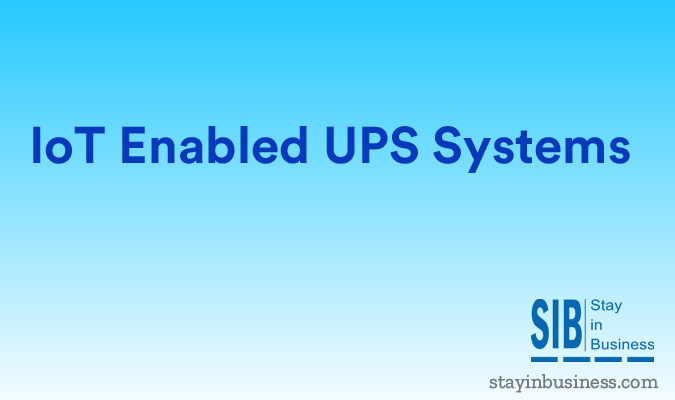IoT Enabled UPS Systems

IoT enabled UPS systems are an integral component of data center resiliency and keep critical systems up and running. As part of their business continuity strategy, most organizations facilitate uninterrupted power supply through a reliable and easy to operate UPS with hassle free maintenance that requires minimal downtime.
Since automation and remote management are highly prevalent in today’s data centers, UPS systems can’t do without IoT capabilities for status monitoring and operational control.
Installation and Startup
The startup configuration includes the solution size and other specifications such as a single phase or three phase setup.
Other factors include deployment speed, sizing constraints, energy usage and the ease of performing loop tests to check system performance before connecting the load.
Modular and scalable solutions would also require additional batteries.
Expansion, Resiliency & Scalability
As businesses expand operations, UPS systems must be able to accommodate increasing workloads without compromising on resilience or uptime.
High availability can be leveraged through parallel, N+1 or distributed & redundant UPS deployments.
Organizations can plan for growth by using sample data center designs as reference while putting together power systems. This way, possible configurations can be implemented and tested.
Maintenance & Battery Considerations
Hassle free maintenance is essential as most outages are caused by man-made errors.
The minimal maintenance requirements of IoT enabled UPS systems with front access can drastically reduce downtime. For instance, dust filters located in the front can be easily and frequently for cleaning, thereby protecting critical components from damage.
Valve-regulated lead-acid (VRLA) battery systems consume more energy. Lithium-Ion (Li-Ion) on the other hand, provide more efficient energy consumption, last longer, and consequently reduce the number of faults and errors as well as operational and maintenance costs, for e.g. fewer battery changes.
IoT enabled UPS systems today can be remotely managed thanks to inbuilt sensors. System status can be carefully assessed through detailed data analytics and staff can be notified in real time of potential outages or disruptions.
Efficiency & Multiple Operating Modes
When there is a reliable and stable supply of power, the eco mode in modern IoT enabled UPS systems can drastically reduce energy consumption by circumventing the filtering level and directly supplying the power to the load. Energy filtering becomes necessary when the power supply is erratic. On the other hand, the double-conversion mode ensures business continuity by routing all the power through the inverter to provide a steady supply. However, this mode overworks power components and can impact reliability in the long run. Lithium Ion batteries last for up to 10 years and can bring down energy costs by around 50% although the initial CAPEX is higher.
Data Driven Control
With IoT enabled UPS systems, organizations can use software to monitor and manage the entire infrastructure to provide an uninterrupted supply of power. At a functional level, IoT enabled UPS systems include GUIs that facilitate simple configurations. More rigorous system monitoring can be achieved with an onsite Data Centre Infrastructure Management (DCIM) software application. Cloud based DCIM software can further improve business continuity, especially when operations are outsourced to third party vendors.
Data center application performance can also be improved based on the analytics provided by the cloud-based DCIM software. Users can also improve performance through real time recommendations and round the clock monitoring. Mobile compatibility allows users to receive updates on their smartphones. Potential causes for disruption can be resolved well in advance.
Categories: Business Continuity, Crisis Management, DR Plans
